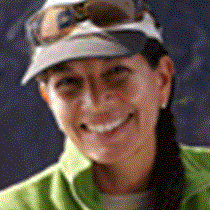Española Island
Our first full day was dedicated to the southeastern island of Española, formerly known as Hood. We spent the morning visiting Gardner Bay. This bay is a wonderful place for kayaking along the volcanic coastline, or exploring the underwater world where fish are abundant. After breakfast, a safety kayak and snorkel briefing, everybody geared up, some of our guest went on kayaks, and others went for a glass bottom boat experience to glimpse the life below the surface without submerging in the water. Others went for tour first deep water experience of the week, at the small offshore islet of Gardner; before landing on the beach explore a dazzling white beach among dozens of resting sea lions, some young males and many females and pups.
The sky was blue on one side and cloudy on the other. Suddenly we had a shower, one of those tropical, heavy rains, but since we are in the rainy season and this is what we should expect, nobody complained and everybody enjoyed the activities under the rain that lasted less than an hour.
In the afternoon we visited another part of the island, with a dry landing at Punta Suarez, one of the richest wildlife locations in Galápagos. Sea lions and marine iguanas greeted us ashore and further along the trail, lava lizards, mockingbirds and Darwin's finches were showing off, while denizens of female marine iguanas were busy digging their nests. Then, we were happily surprised to find the endemic waved albatrosses that already arrived. Flying over the colony, these majestic birds come every year, flying thousands of miles, to encounter their mates and start their annual breeding cycle only here on Española.
On the way back, hundreds of Nazca boobies and blue-footed boobies were either courting, displaying, feeding their young chicks or warning the others by the presence of the Galápagos hawk, the top predator on the Islands.
While admiring these fascinating animals, it seems that we have entered another world; one where iguanas bask on the rocky shorelines like sculpted dragons, where sea lions play, sleep and romp like pups, and where birds peck around our feet with no more fear than a barnyard flock. This is the world that Charles Darwin visited in 1835, and which shaped evolutionary science forever by inspiring his then novel concept of natural selection and survival of the fittest.




